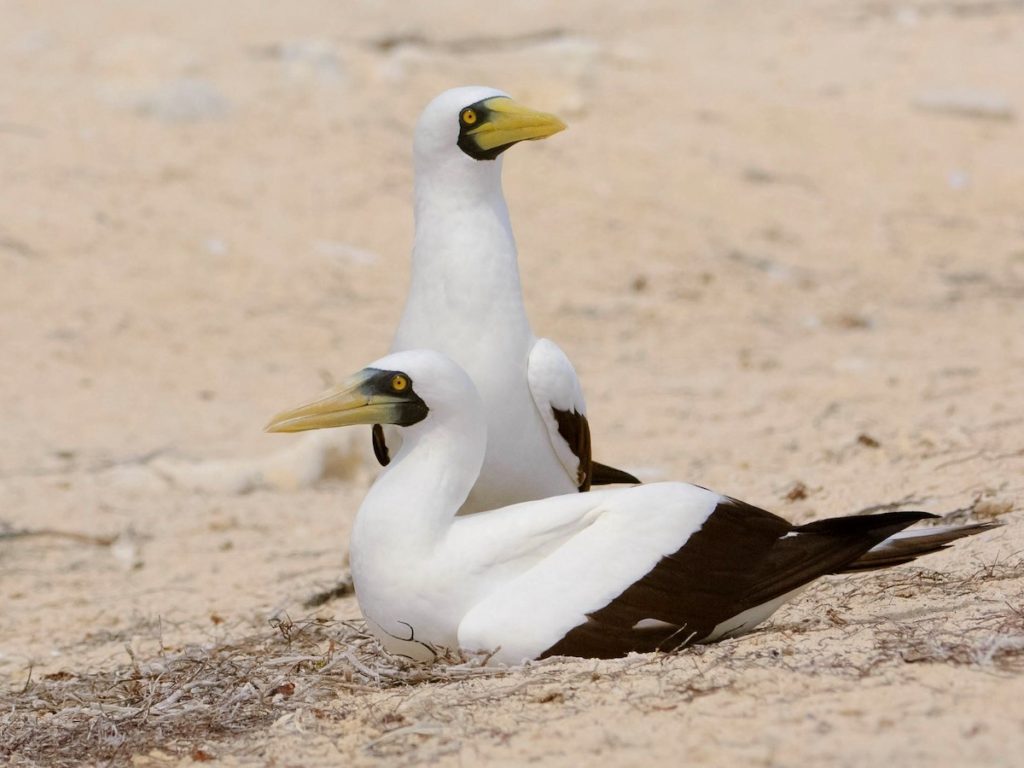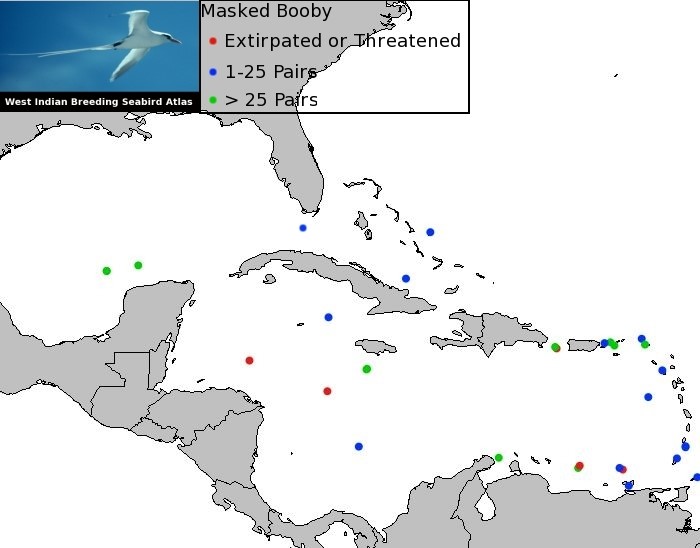Birdfinding.info ⇒ Widespread throughout the tropical oceans, but generally uncommon across most of its extensive range. In the U.S., it is fairly common in the offshore waters of the Gulf of Mexico, and can be seen reliably at Hospital Key in the Dry Tortugas, which has supported a small but growing breeding colony since the mid-1980s. In Hawaii, it is common in the Northwest Chain and also occurs regularly around the main islands, especially at Makapu’u Point and in offshore waters of Oahu, Kauai, and the Big Island. In the Caribbean, it can often be seen from cruise ships around the Virgin and Leeward Islands. It is common in offshore waters of Baja California and a fairly regular vagrant to southern California.
Masked Booby
Sula dactylatra
Pantropical. Highly pelagic and rarely seen from land except on its breeding grounds.

Approximate global distribution of the Masked Booby. © Xeno-Canto 2021
Breeding. Breeds colonially on remote, tropical oceanic islets. Four regional subspecies are generally recognized.
Atlantic: dactylatra, nests on islands of the Gulf of Mexico, Caribbean Sea, Brazil’s Fernando de Noronha, Abrolhos, and Trindade islands, Ascension Island, and St. Helena.
In the Caribbean, approximately 90% of the regional population nests on the atolls of Campeche Banks (e.g., Arrecife Alacrán) in the southeastern Gulf of Mexico. There are sizeable colonies (>100 pairs) on atolls south of Jamaica and Venezuela’s offshore islands, smaller colonies on islets around Puerto Rico, the Virgin Islands, and Anguilla, and much smaller colonies scattered from the Dry Tortugas to Tobago.
Western Indian: melanops nests on islets in the western Indian Ocean, including the Seychelles (Boudeuse), Aldabra, Tromelin, Chagos, and Mauritius.
Indo-Pacific: personata nests on numerous island groups from the eastern Indian Ocean to the eastern Pacific.
It is localized in the Indian Ocean on the Cocos Keeling Islands and Australia’s northwestern islets Adele and Ashmore Reef; in the Philippines on Tubbataha Reefs; and in the Coral Sea on the Australian islets, Diamond Islets and Wreck Reefs.

Masked Booby, S. d. personata, at nest. (Tongareva Atoll, Cook Islands; March 21, 2019.) © Dr. Michael White
Widespread across the central and southern Pacific: Hawaii, Wake, Johnston, Palmyra, Kiribati, New Caledonia (Chesterfield Islands), Fiji (Naevo), Tonga (Hunga Tonga Hunga Ha’apai), Cook Islands (Tongareva), Tahiti (Bora Bora), Gambier (Morane), Pitcairn (Ducie and Oeno), Easter, Salas y Gómez, and Desventuradas (San Félix and San Ambrosio).
In Hawaii, the largest colonies are on French Frigate Shoals (~700 pairs) and Laysan (~425), followed by Lisianski (~325), Ka’ula (~300), Necker (~275), Nihoa (~275), Pearl & Hermes (~150), Gardner Pinnacles (~140), Kure (~70), and Moku Manu (~50).
Also nests on several Mexican islands, including Rocas Alijos, the Revillagigedos (San Benedicto and Clarión), and Clipperton—the world’s largest colony: ~100,000 pairs.
Seems likely to nest somewhere among the islets northeast of Taiwan, where it is seen regularly in small numbers year-round, often in the company of locally breeding species.
Southwestern Pacific: the “Tasman Booby” (tasmani) breeds on three remote island groups of the Tasman Sea: Lord Howe (~500 pairs), Norfolk (~350 pairs), and the Kermadec Islands (~100 pairs). Nonbreeders disperse to the southern Coral Sea north to New Caledonia.
Nonbreeding. Ranges widely, essentially throughout the world’s tropical and subtropical seas, including extensive areas where it is not known to breed (at least not regularly in large numbers), such as the Arabian Sea and western Pacific between Taiwan and Japan.
Identification
A large white booby with blackish-blue facial skin, a dull yellowish or horn-colored bill, largely black flight feathers and tail.
Foot coloration varies by population: some are dull greenish, while others are gray, brown, yellow, or orange.
When seen in flight at a distance, the uppersides of the wings appear mostly black and the undersides appear mostly white.

Masked Booby, S. d. personata. (Moku Manu, Oahu, Hawaii; June 26, 2008.) © Eric VanderWerf
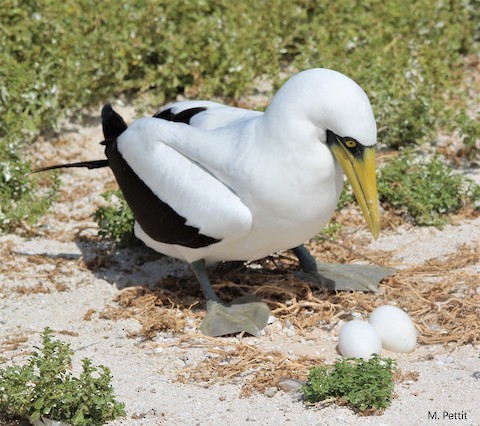
Masked Booby, S. d. personata, at nest, showing pale olive-gray feet. (Middle Island, Ashmore Reef, Western Australia; April 29, 2019.) © Magen Pettit
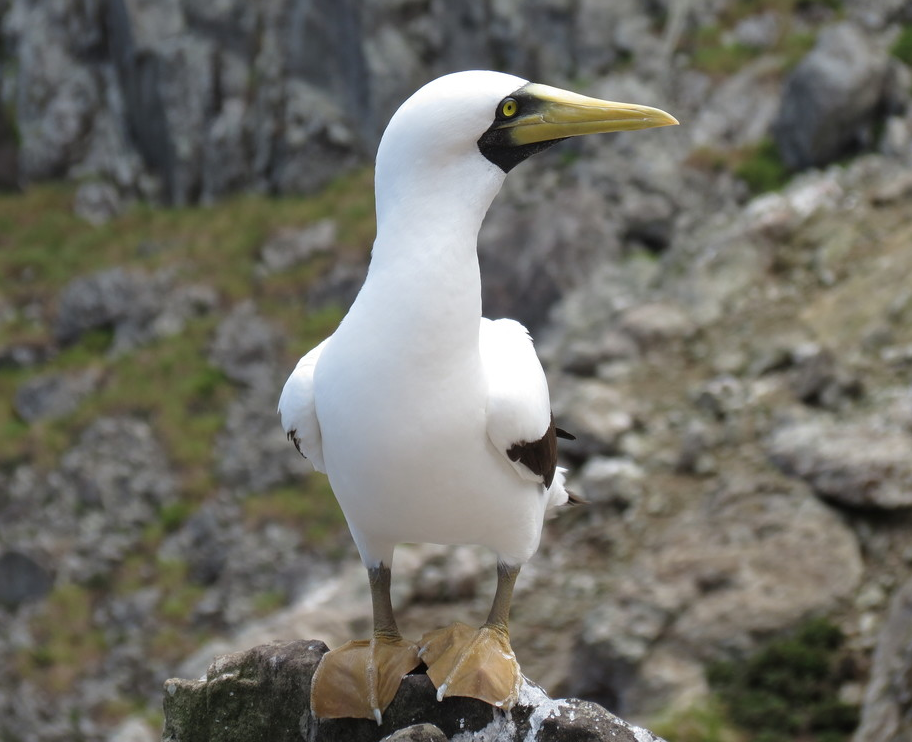
Masked Booby, S. d. dactylatra, with yellowish-brown feet. (Ilha da Trindade, Brazil; October 4, 2015.) © Douglas R. Silva
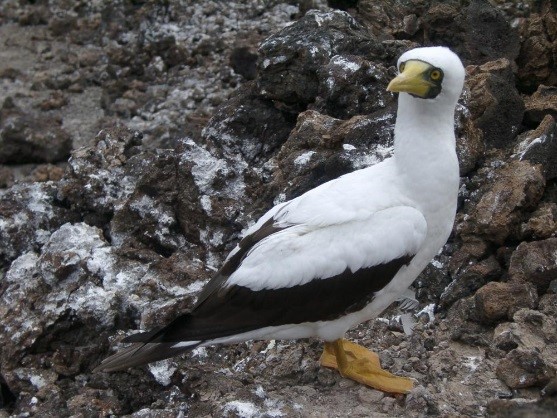
Masked Booby, S. d. dactylatra, with deep-yellow legs and feet. (Ascension Island; October 3, 2007.) © Laurent Demongin
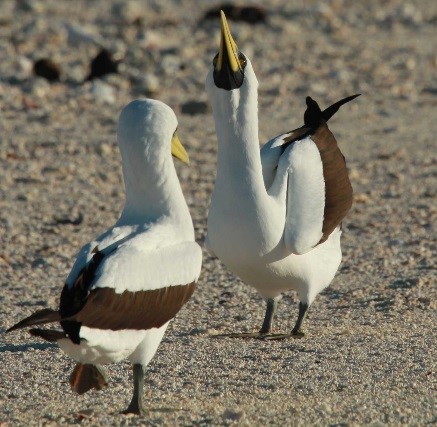
Masked Booby, S. d. personata, pair in courtship display. (Chesterfield Islands, New Caledonia; June 4, 2012.) © Julien Baudat-Franceschi

Masked Booby, S. d. personata. (Eastern Island, Midway Atoll National Wildlife Refuge, Hawaii; March 31, 2018.) © Jonathan Plissner
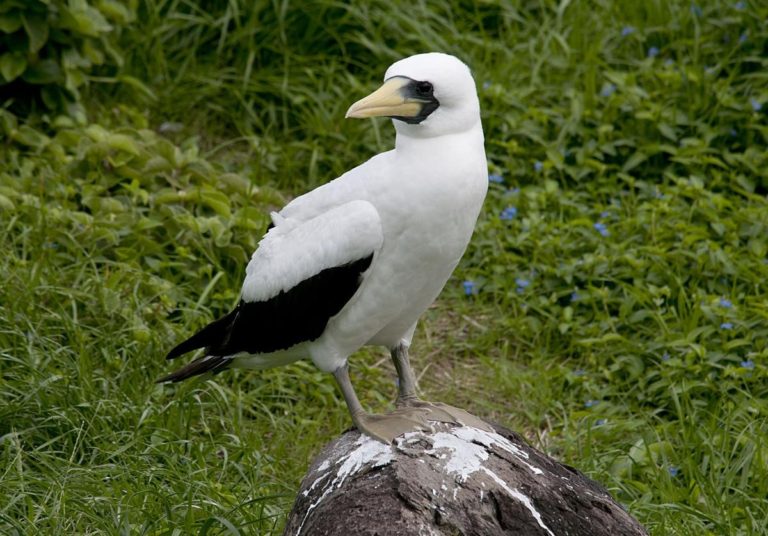
“Tasman Booby,” S. d. tasmani, showing the dark eyes that distinguish this form. (Phillip Island, Norfolk Island, Australia; April 2012.) © Philip Griffin
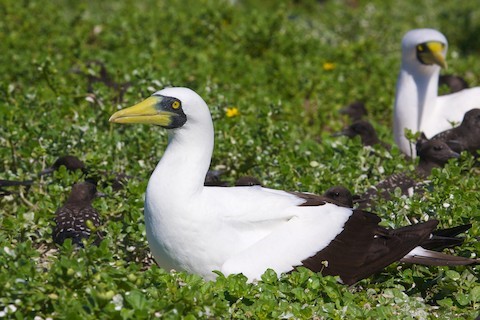
Masked Booby, S. d. personata. (Naevo Island, Fiji; July 16, 2011.) © Michael Andersen
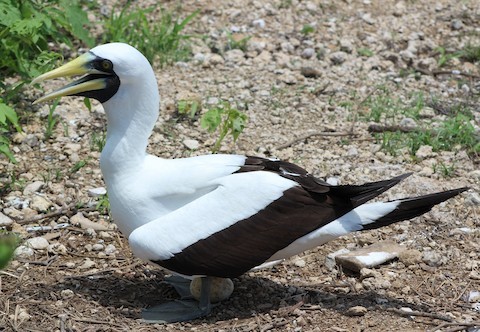
Masked Booby, S. d. personata. (Isla de la Plata, Ecuador; February 9, 2017.) © Sandra María Plúa Albán
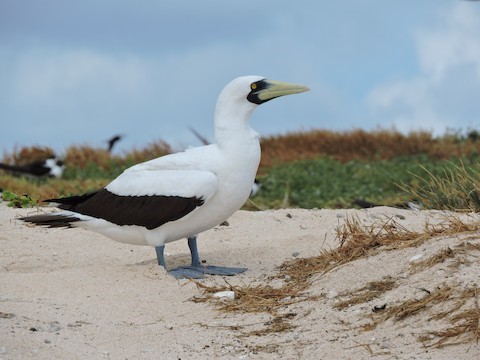
Masked Booby, S. d. personata, with blue-gray feet. (Wreck Reefs, Coral Sea Islands, Queensland, Australia; November 17, 2017.) © Richard Miller

Masked Booby, S. d. personata. (Offshore from Keelung City, Taiwan; August 14, 2020.) © Shuo-Chien Hung
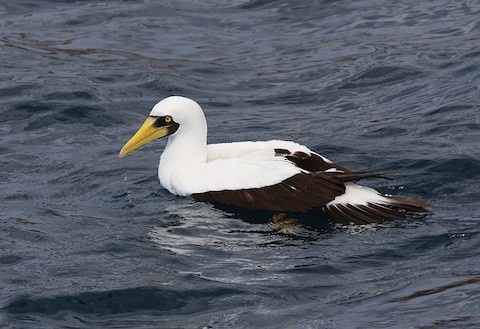
Masked Booby, S. d. personata. (Isla Socorro, Mexico; February 15, 2017.) © Amy McAndrews

Masked Booby, S. d. melanops. (Offshore from Mirbat, Dhofar, Oman; November 22, 2016.) © Benny Cottele
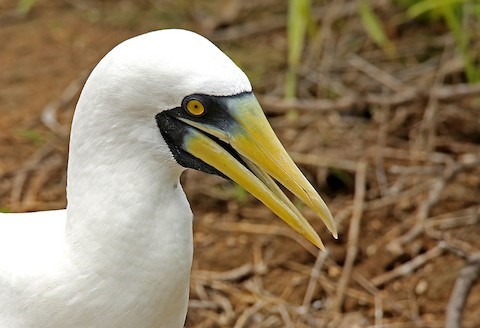
Masked Booby, S. d. personata. (Isla de la Plata, Ecuador; February 6, 2017.) © Roger Ahlman
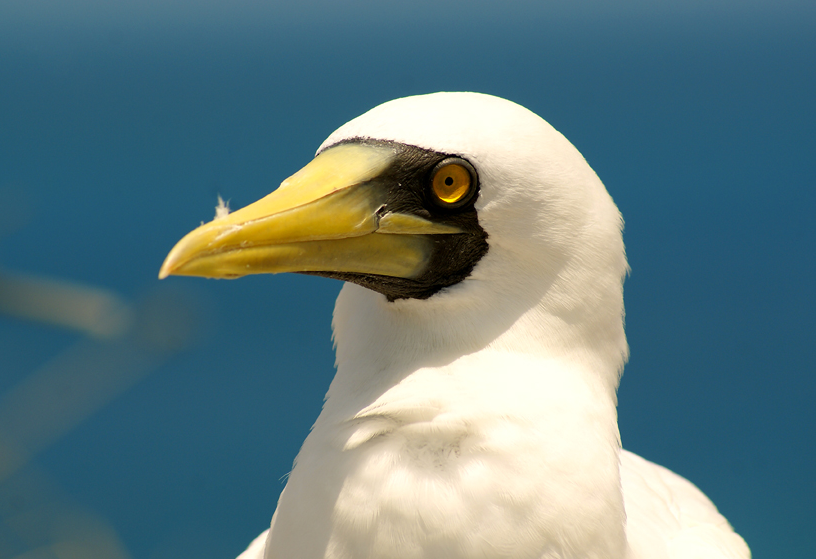
Masked Booby, S. d. dactylatra. (Ilhas Abrolhos, Bahia, Brazil; October 11, 2011.) © Francisco Neto

Masked Booby, S. d. dactylatra. (Redonda Island, Antigua & Barbuda; September 21, 2012.) © Mikko Pyhälä
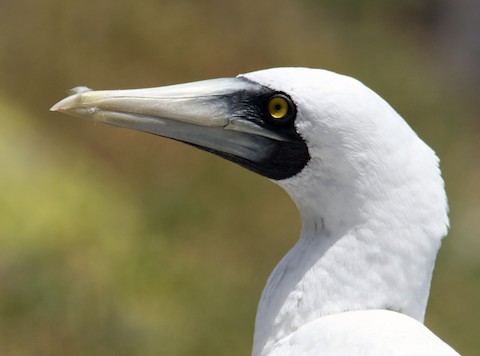
Masked Booby, S. d. dactylatra. (Redonda Island, Antigua & Barbuda; September 21, 2012.) © Mikko Pyhälä
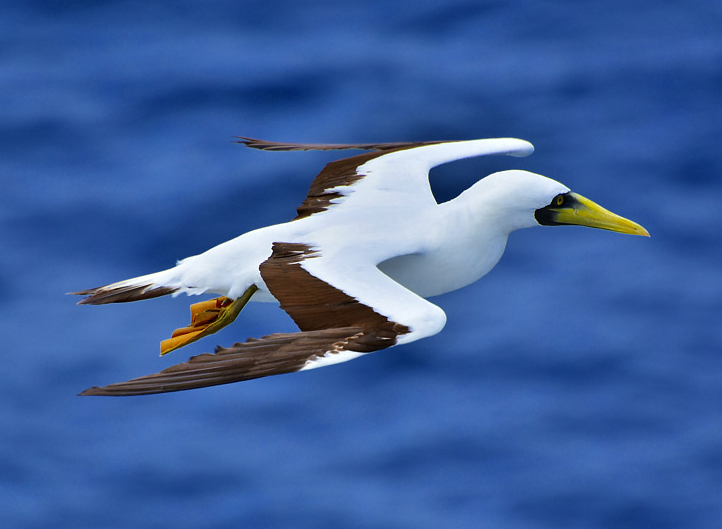
Masked Booby, S. d. dactylatra, with orange feet. (Salvador, Bahia, Brazil; March 12, 2020.) © Elio Costa

Masked Booby, S. d. personata. (Bass Islands, French Polynesia; January 21, 2014.) © Henry L. Ghiold

Masked Booby, S. d. dactylatra. (Offshore northeast of Fajardo, Puerto Rico; August 9, 2016.) © Noah Frade
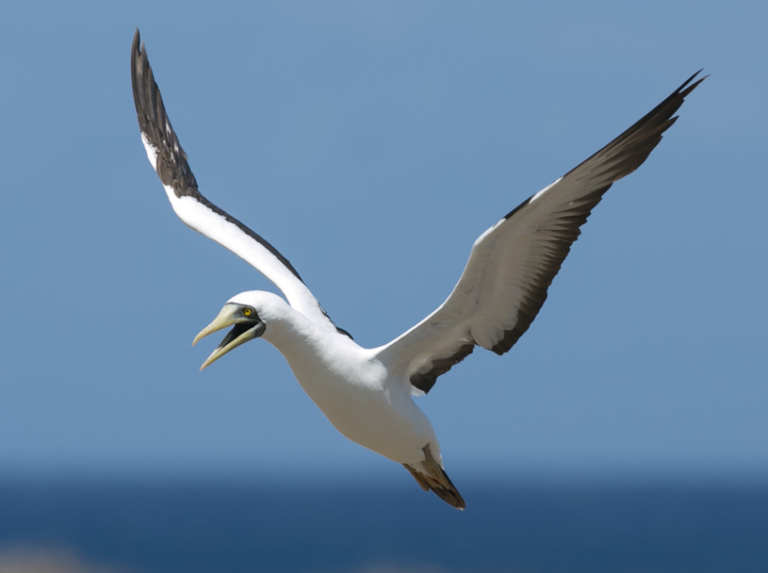
Masked Booby, S. d. dactylatra. (Fernando de Noronha, Brazil; October 11, 2013.) © Ester Ramirez
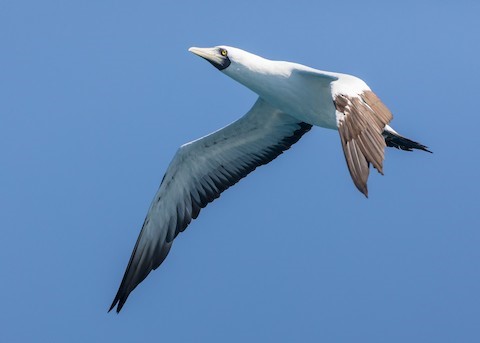
Masked Booby, S. d. dactylatra. (Dry Tortugas National Park, Florida; April 25, 2017.) © Darren Clark

Masked Booby, S. d. dactylatra. (Offshore northwest of Grand Turk, Turks & Caicos; November 27, 2013.) © Tim Lenz
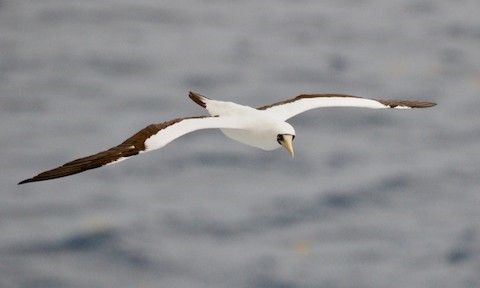
Masked Booby, S. d. dactylatra. (Offshore north of Cozumel, Quintana Roo, Mexico; April 9, 2019.) © Aaron Boone
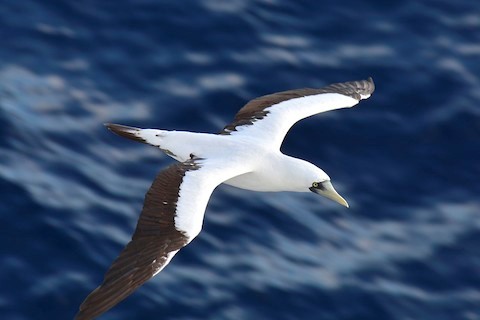
Masked Booby, S. d. dactylatra. (Offshore from Castries, St. Lucia; March 28, 2018.) © Luiz Moschini
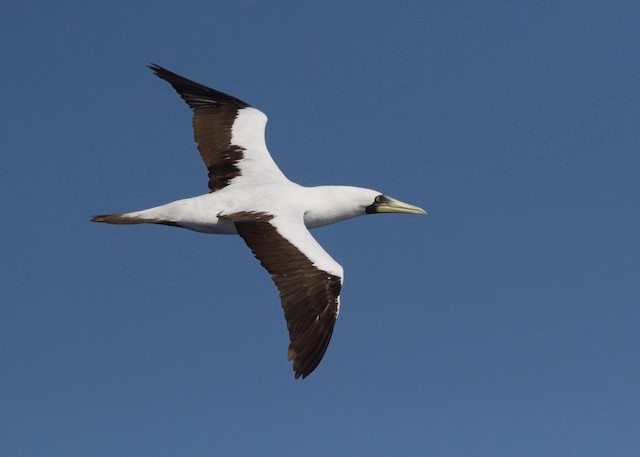
Masked Booby, S. d. personata. (Kaulakahi Channel, Hawaii; April 3, 2016.) © Jacob Drucker
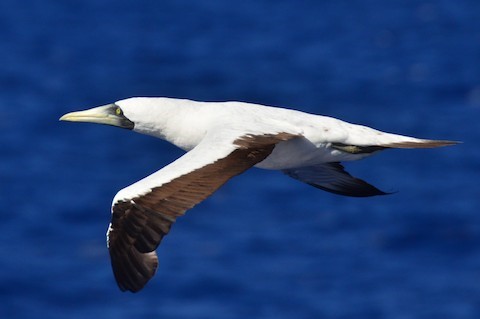
Masked Booby, S. d. dactylatra. (Offshore southwest of St. Martin; June 21, 2014.) © Michael Turso
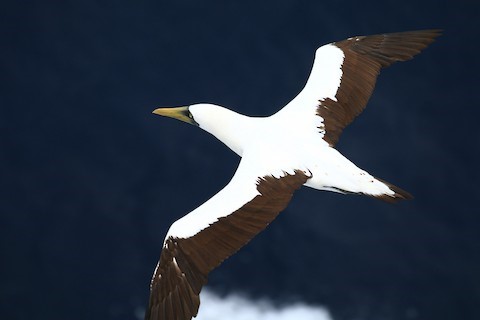
Masked Booby, S. d. personata—the black tail is not easy to see against a dark background. (Offshore from Keelung City, Taiwan; October 16, 2019.) © Blake Wen

Masked Booby, S. d. dactylatra. (Offshore near the Ilhas Abrolhos, Bahia, Brazil; February 15, 2009.) © Ivan Angelo

Masked Booby, S. d. personata. (South of Ni’ihau, Hawaii; October 14, 2019.) © Laura Keene
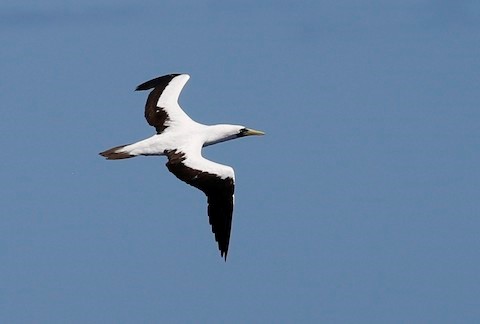
Masked Booby, S. d. personata. (South of Ni’ihau, Hawaii; October 14, 2019.) © Laura Keene
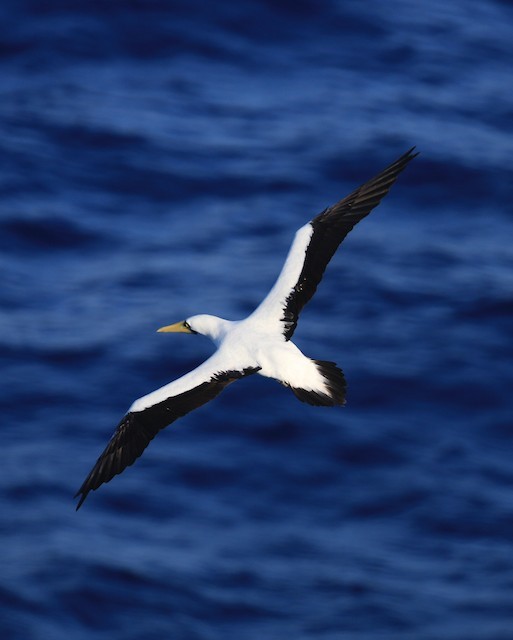
Masked Booby, S. d. dactylatra—the black tail is not easy to see against a dark background. (Turks & Caicos; November 27, 2013.) © Tim Lenz
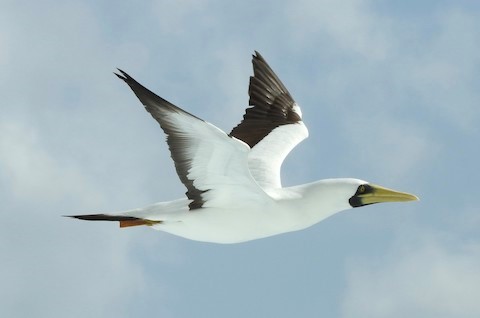
Masked Booby, S. d. dactylatra. (Offshore from Baia Formosa, Rio Grande do Norte, Brazil; February 6, 2018.) © Noam Markus
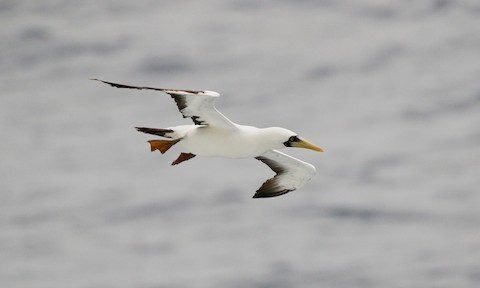
Masked Booby, S. d. dactylatra, showing orange feet. (Offshore north of Cozumel, Quintana Roo, Mexico; April 9, 2019.) © Aaron Boone
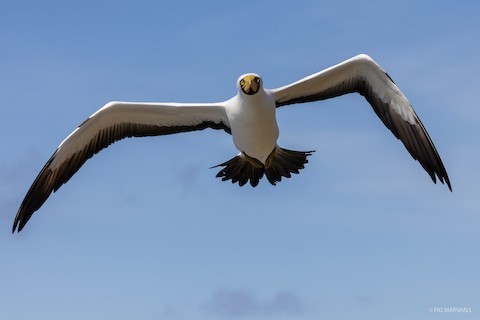
Masked Booby, S. d. personata. (Motu Nui / Motu Iti, Easter Island, Chile; June 11, 2018.) © Pio Marshall
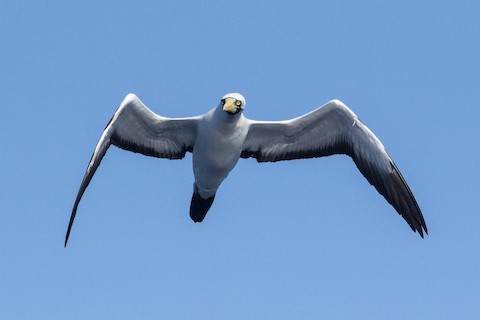
Masked Booby, S. d. personata. (Offshore from Nihoa, Northwest Chain, Hawaii; March 28, 2020.) © Eric VanderWerf
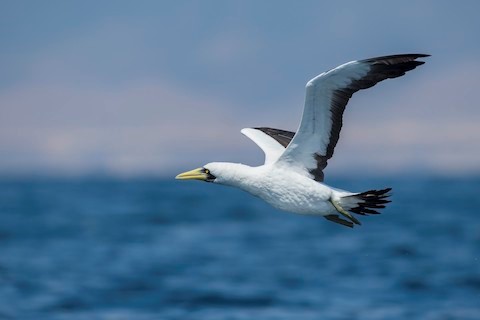
Masked Booby, S. d. melanops. (Offshore from Mirbat, Dhofar, Oman; October 24, 2017.) © Benny Cottele

Masked Booby, S. d. dactylatra. (Dry Tortugas National Park, Florida; April 25, 2017.) © Darren Clark

Masked Booby, S. d. personata. (Offshore from Nihoa, Northwest Chain, Hawaii; March 28, 2020.) © Eric VanderWerf
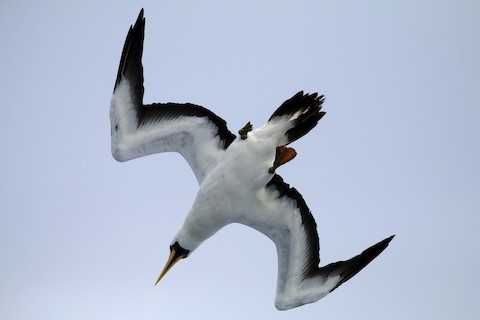
Masked Booby, S. d. personata, diving. (Offshore from Keelung City, Taiwan; October 16, 2019.) © Blake Wen
Immature Plumages. Juveniles have brown upperparts and a brown hood—much like an adult Brown Booby, but the hood is less extensive (ending above the breast) and not as crisply defined.
Unlike Brown Boobies, juvenile Masked usually has a white collar. Those that begin with an all-dark neck typically develop a full white collar early in their maturation.
As they mature from first- to second-year plumage, the areas of brown coloration recede and are replaced by white. The neck turns white first, then the hood fades and disappears.
The bill usually begins as dark yellowish-brown, then quickly turn to pale-yellow.
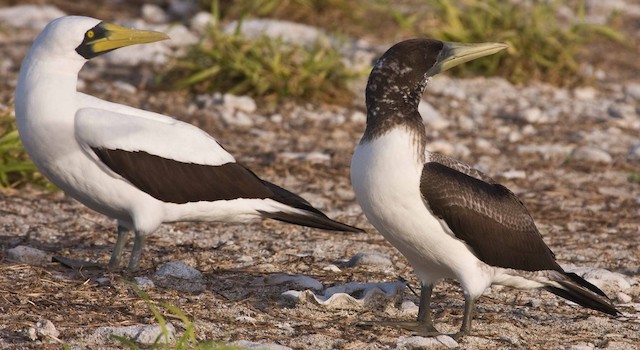
Masked Booby, S. d. personata, adult and juvenile. (Wake Island; October 25, 2010.) © Eric VenderWerf
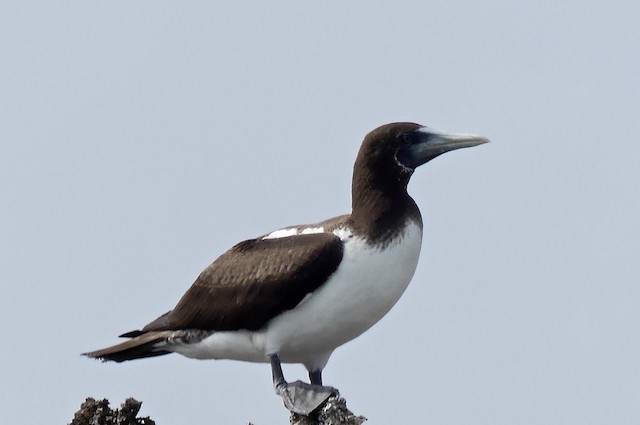
Masked Booby, S. d. melanops, juvenile. (Cosmoledo Atoll, Seychelles; January 13, 2018.) © Katherine Clark

Masked Booby, S. d. personata, juvenile. (Moku Manu, Oahu, Hawaii; June 26, 2008.) © Eric VanderWerf
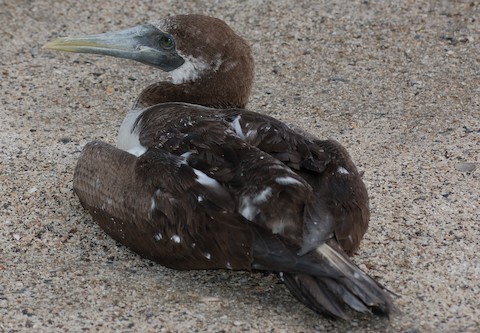
Masked Booby, S. d. dactylatra, juvenile. (Holly Beach, Louisiana; June 11, 2010.) © Paul Conover
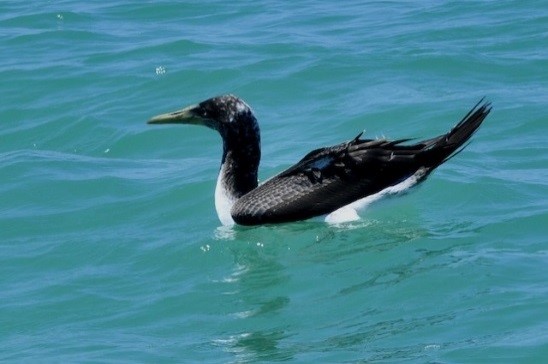
Masked Booby, S. d. personata, juvenile. (Christmas Island, Kiribati; November 3, 2016.) © John Doty
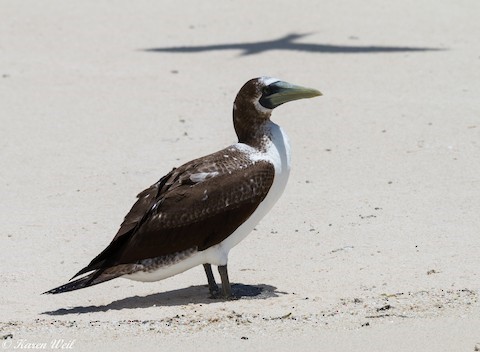
Masked Booby, S. d. personata, immature. (Michaelmas Cay, Queensland, Australia; December 9, 2017.) © Karen Weil

Masked Booby, S. d. dactylatra, immature. (Fort Pierce, Florida; October 23, 2020.) © Lois Ballard
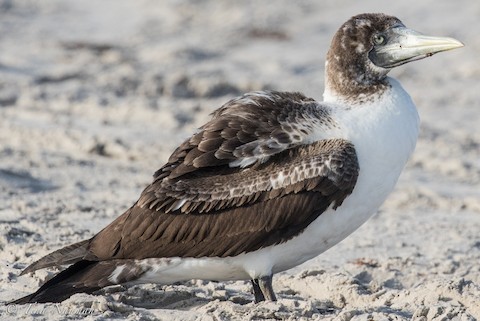
Masked Booby, S. d. dactylatra, immature. (Padre Balli Park, Corpus Christi, Texas; April 8, 2018.) © Tina Nauman
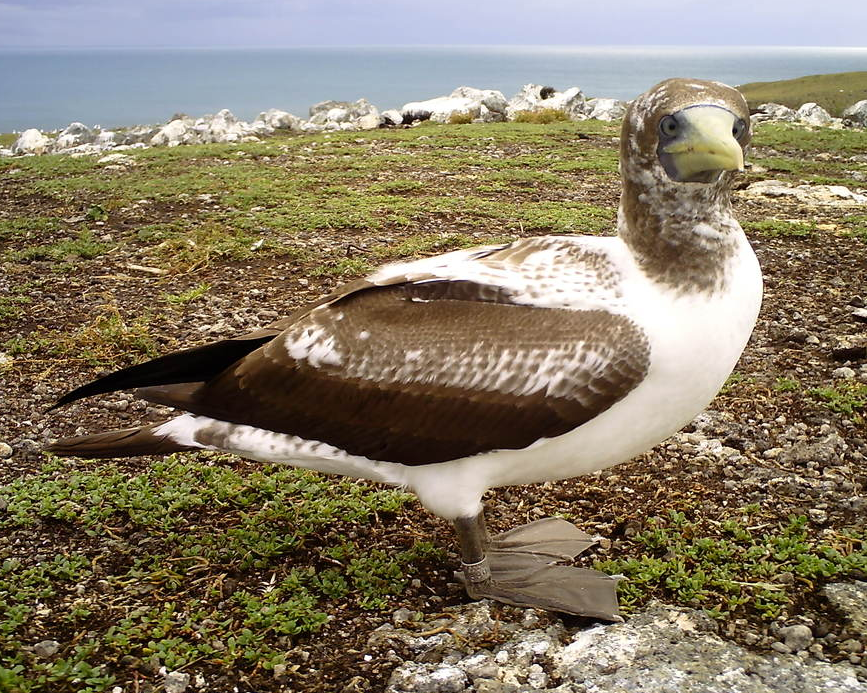
Masked Booby, S. d. dactylatra, immature. (Ilhas Abrolhos, Bahia, Brazil; March 17, 1997.) © Daniel Schnitzer

Masked Booby, S. d. personata, immature. (Christmas Island, Kiribati; October 19, 2009.) © John Doty
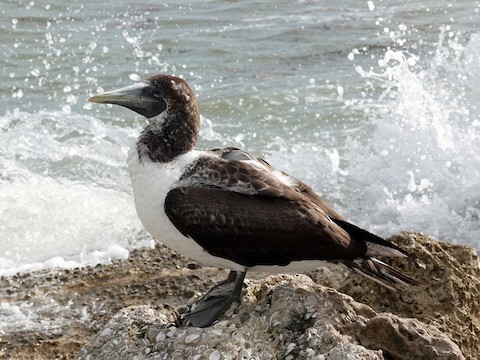
Masked Booby, S. d. dactylatra, immature. (Fort Pierce, Florida; October 23, 2020.) © Lois Ballard

Masked Booby, S. d. dactylatra, immature with an atypically pale-brown hood. (Fernando de Noronha, Brazil; October 6, 2018.) © Carlos Gussoni
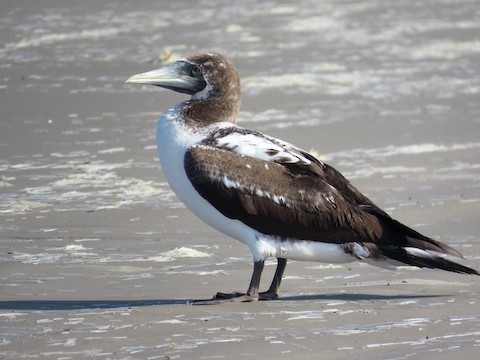
Masked Booby, S. d. dactylatra, immature. (North Padre Island, Kleberg County, Texas; May 20, 2018.) © Austin Moss
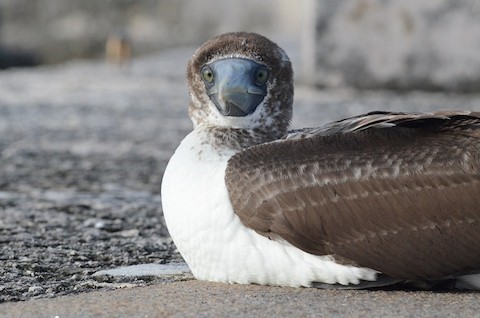
Masked Booby, S. d. dactylatra, immature. (Royal Naval Dockyard, Bermuda; December 12, 2015.) © Andrew Dobson
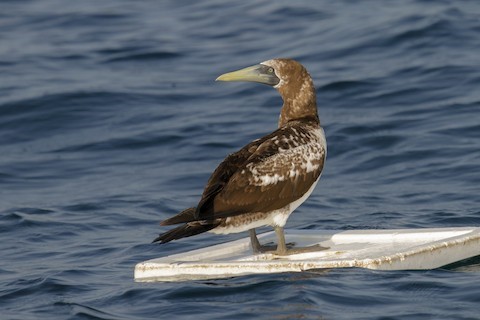
Masked Booby, S. d. melanops, immature. (Offshore from Khor Kalba, Fujairah, United Arab Emirates; November 6, 2012.) © Tommy Pederson

Masked Booby, S. d. dactylatra, immatures. (Ilhas Abrolhos, Bahia, Brazil; July 5, 2014.) © Luana Bianquini

Masked Booby, S. d. personata, subadult. (Corona Del Mar State Beach Park, Orange County, California; October 23, 2020.) © Devon Bradley
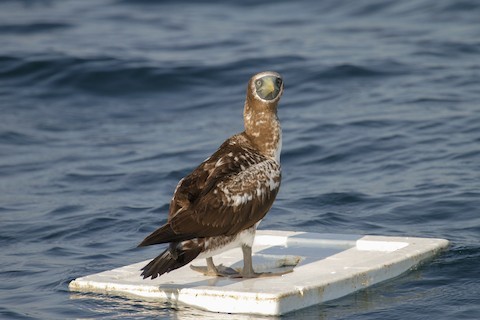
Masked Booby, S. d. melanops, immature. (Offshore from Khor Kalba, Fujairah, United Arab Emirates; November 6, 2012.) © Tommy Pederson
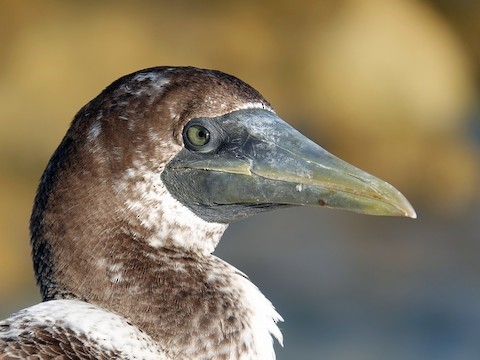
Masked Booby, S. d. dactylatra, immature. (Fort Pierce, Florida; October 23, 2020.) © Lois Ballard
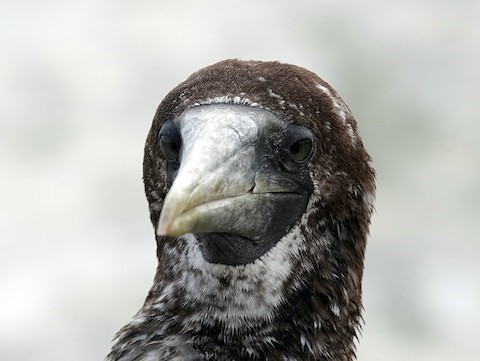
Masked Booby, S. d. dactylatra, immature. (Fort Pierce, Florida; October 23, 2020.) © Lois Ballard

Masked Booby, S. d. dactylatra, immature. (Padre Balli Park, Corpus Christi, Texas; April 8, 2018.) © Tina Nauman

Masked Booby, S. d. dactylatra, immature. (Fort Pierce, Florida; October 26, 2020.) © Greg Schrader
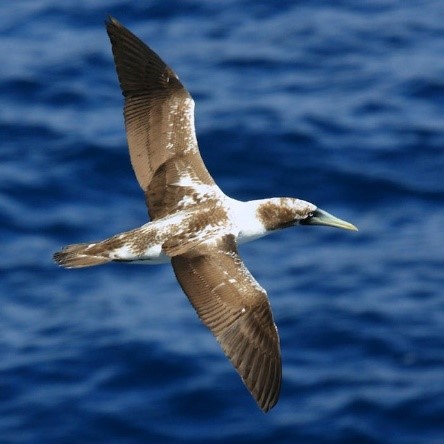
Masked Booby, S. d. dactylatra, immature. (Offshore from Aruba; October 19, 2009.) © Tom Murray
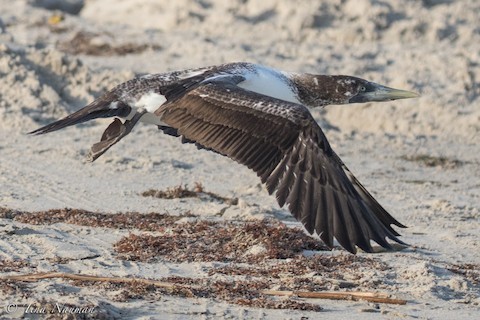
Masked Booby, S. d. dactylatra, immature. (Padre Balli Park, Corpus Christi, Texas; April 8, 2018.) © Tina Nauman
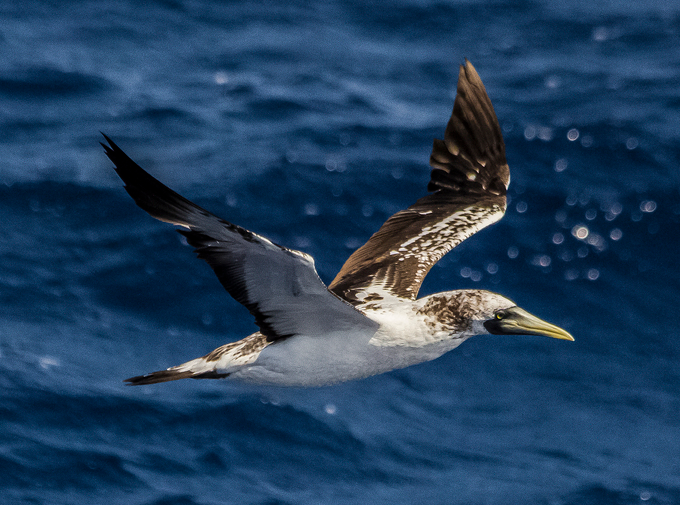
Masked Booby, S. d. dactylatra, immature. (Offshore from Presidente Kennedy, Espírito Santo, Brazil; October 16, 2015.) © Gustavo Soares de Oliveira

Masked Booby, S. d. personata, immature. (Offshore from San Diego, California; June 10, 2018.) © Bruce Rideout
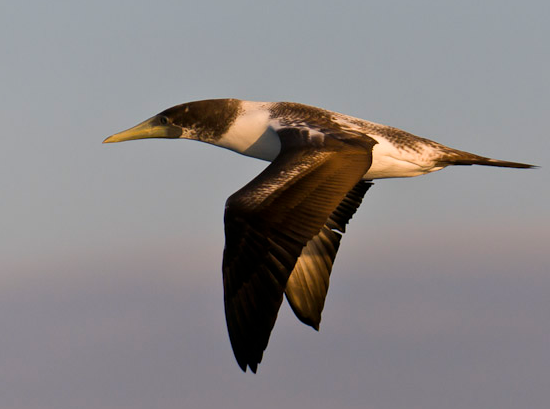
Masked Booby, S. d. dactylatra, immature. (Offshore from southern Bahia, Brazil; October 29, 2008.) © Marcos Amend
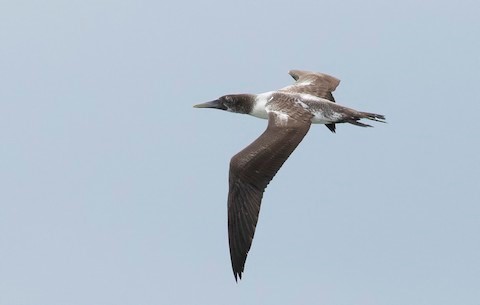
Masked Booby, S. d. dactylatra, immature. (Fort Pierce, Florida; October 25, 2020.) © Barbara Taylor
In all immature plumages, Masked and Nazca Boobies have more extensively white underwings than other boobies of the same age class.
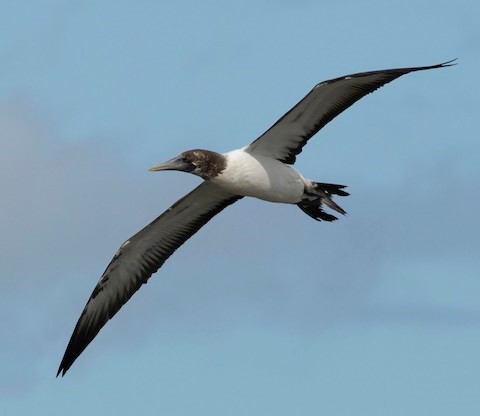
Masked Booby, S. d. dactylatra, immature. (Fort Pierce, Florida; October 25, 2020.) © Barbara Taylor

Masked Booby, S. d. personata, immature. (Motu Nui / Motu Iti, Easter Island, Chile; March 19, 2019.) © Garrett Lau

Masked Booby, S. d. dactylatra, immature. (Basseterre, St Kitts & Nevis; December 16, 2016.) © Fernando Figueiredo

Masked Booby, S. d. dactylatra, immature. (Aruba; May 9, 2017.) © Carly Farley

Masked Booby, S. d. dactylatra, immature. (Offshore from Ragged Point, Barbados; December 6, 2014.) © Jérôme Wey
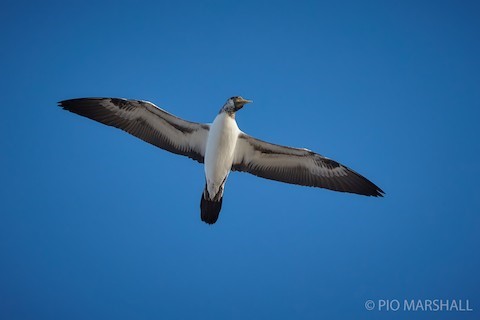
Masked Booby, immature. (Motu Nui / Motu Iti, Easter Island, Chile; June 11, 2018.) © Pio Marshall
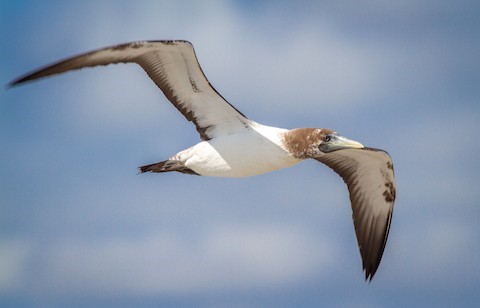
Masked Booby, S. d. dactylatra, immature. (Fort Pierce Inlet South Jetty Park, Fort Pierce, Florida; October 26, 2020.) © Greg Schrader

Masked Booby, S. d. personata, subadult. (Anacapa Island, California; October 6, 2018.) © David Pereksta
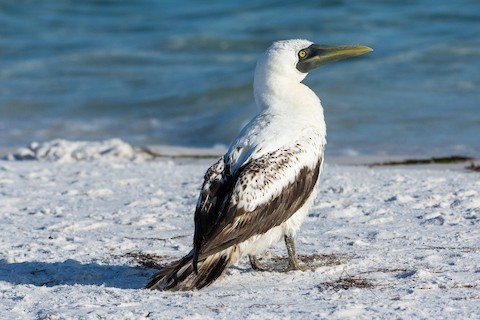
Masked Booby, S. d. dactylatra, subadult molting into adult plumage. (Destin, Florida; July 17, 2019.) © Eric Bodker

Masked Booby, S. d. dactylatra, subadult. (Destin, Florida; July 21, 2019.) © Bruce Purdy
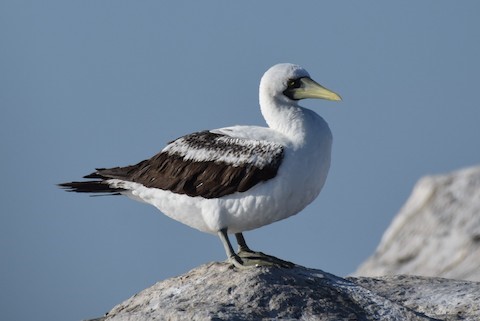
Masked Booby, S. d. personata, subadult. (Dana Point, California; February 28, 2021.) © Naresh Satyan
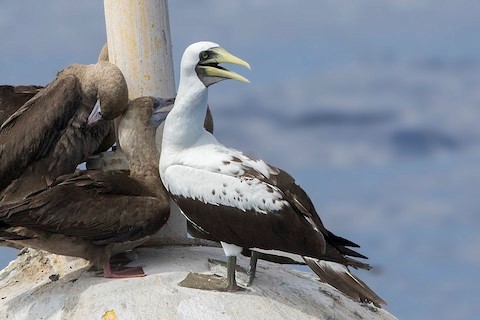
Masked Booby, S. d. personata, subadult. (Offshore from Kailua-Kona, Big Island, Hawaii; September 14, 2018.) © Bradley Hacker

Masked Booby, S. d. dactylatra, subadult. (South Padre Island, Texas; August 1, 2018.) © Justin Bosler
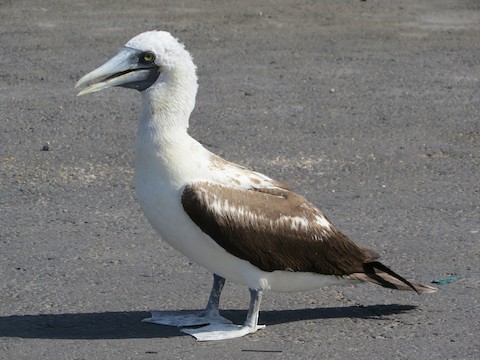
Masked Booby, S. d. dactylatra, subadult. (South Padre Island, Texas; July 23, 2018.) © Tamie Bulow
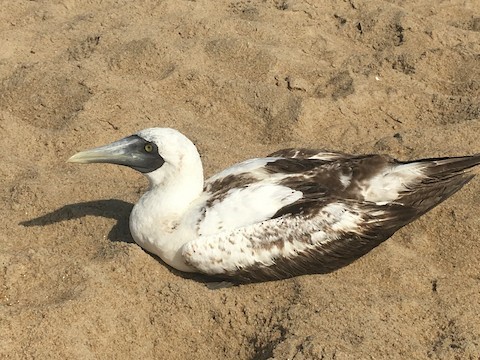
Masked Booby, S. d. dactylatra, subadult. (Kitty Hawk, North Carolina; July 20, 2019.) © Susan Carney

Masked Booby, S. d. personata, subadult. (Santa Monica Bay, California; February 8, 2020.) © Matthew Grube
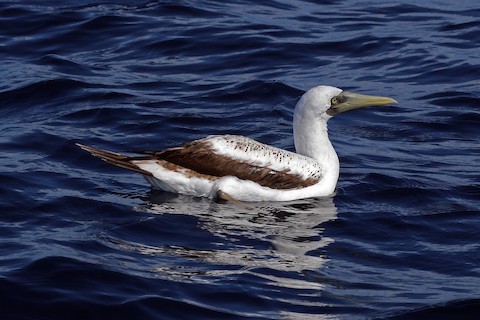
Masked Booby, S. d. dactylatra, subadult. (Offshore from Naples, Florida; August 8, 2020.) © David McQuade
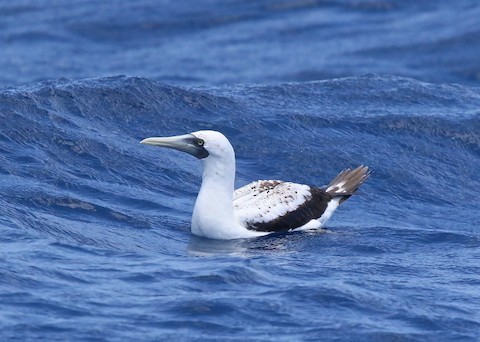
Masked Booby, S. d. dactylatra, subadult. (Offshore from South Padre Island, Texas; August 8, 2015.) © Arman Moreno
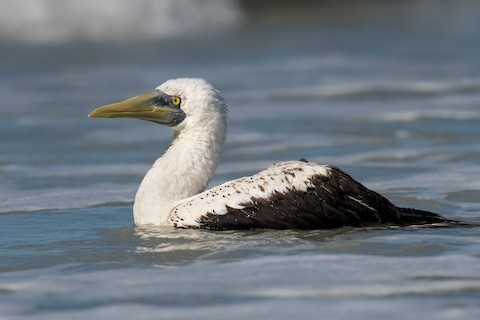
Masked Booby, S. d. dactylatra, subadult. (Suncoast Seabird Sanctuary, Redington Shores, Florida; December 15, 2019.) © Melissa James
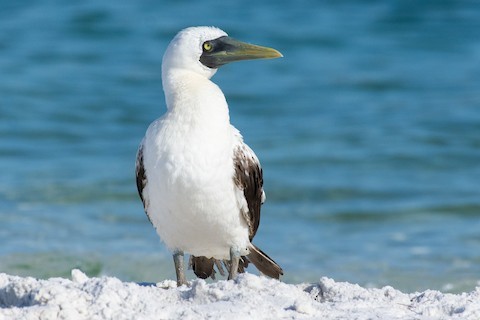
Masked Booby, S. d. dactylatra, subadult. (Destin, Florida; July 17, 2019.) © Eric Bodker
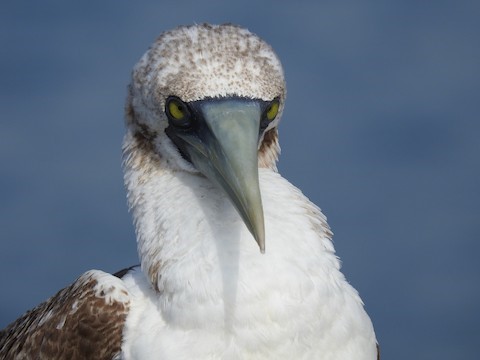
Masked Booby, S. d. personata, subadult. (Corona Del Mar State Beach Park, Orange County, California; October 20, 2020.) © Gisele Schoene
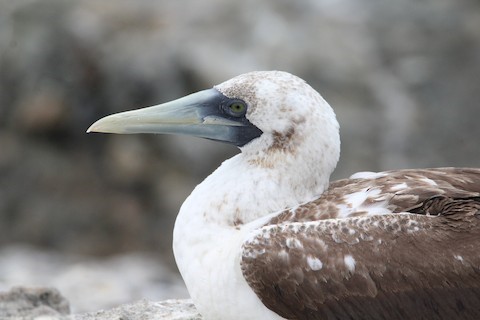
Masked Booby, S. d. personata, subadult. (Corona Del Mar State Beach Park, Orange County, California; October 22, 2020.) © Patrick Sysiong

Masked Booby, S. d. dactylatra, subadult. (South Padre Island, Texas; July 23, 2018.) © Tamie Bulow

Masked Booby, S. d. personata, subadult. (Dana Point, California; February 1, 2021.) © Kristin Campbell
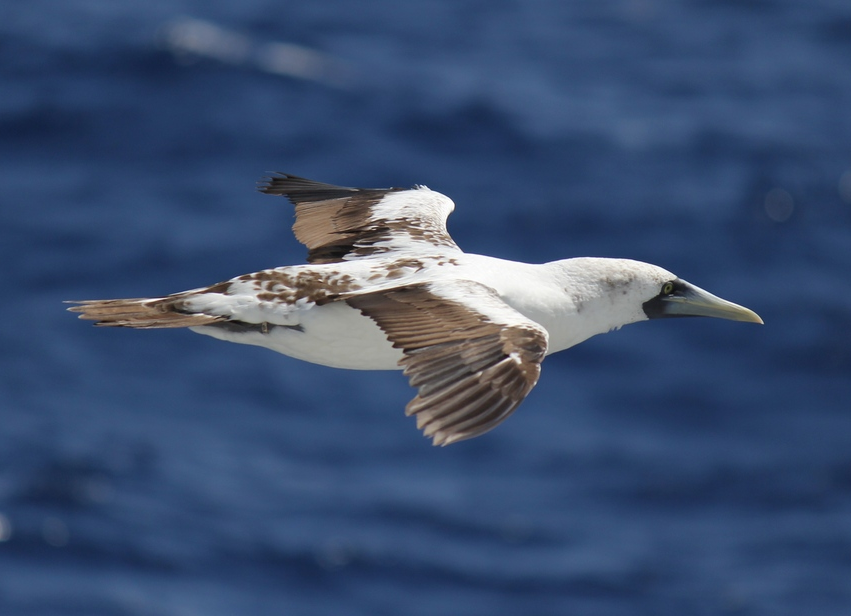
Masked Booby, S. d. dactylatra, subadult. (Cabo Frio, Rio de Janeiro, Brazil; April 4, 2012.) © Mario Spinelli
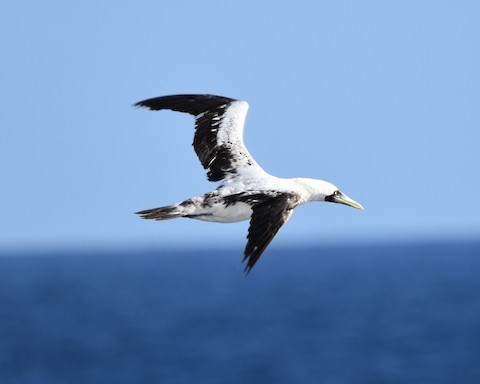
Masked Booby, S. d. dactylatra, subadult. (Offshore west of Guadeloupe; April 14, 2018.) © Nathan Langwald

Masked Booby, S. d. dactylatra, subadult. (Fernando de Noronha, Brazil; November 9, 2015.) © Marco Cruz
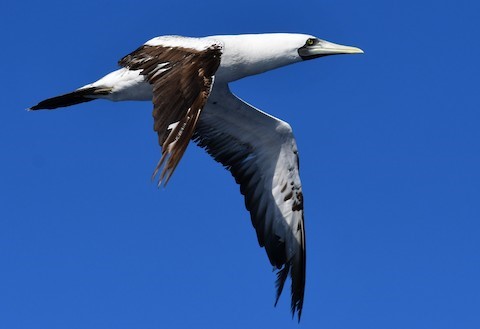
Masked Booby, S. d. dactylatra, subadult. (Offshore from Port Aransas, Texas; November 12, 2020.) © Jon McIntyre

Masked Booby, S. d. personata, immature. (Monterey Bay, California; October 24, 2018.) © Jeff Maw

Masked Booby, S. d. dactylatra, immature. (Offshore from Plaquemines Parish, Louisiana; November 30, 2019.) © Ed Leigh
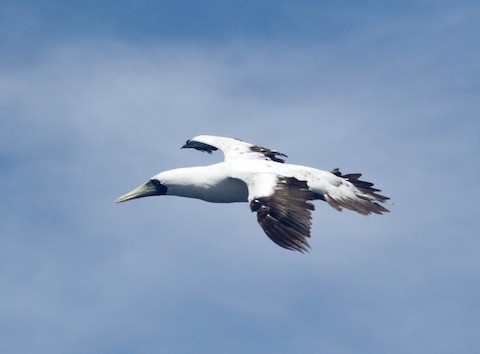
Masked Booby, S. d. dactylatra, subadult. (Georges Bank, Massachusetts; August 20, 2019.) © Skye Haas
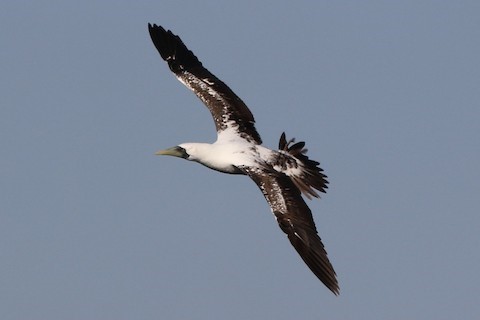
Masked Booby, S. d. personata, subadult. (Marina del Rey, California; February 8, 2020.) © Robert McNab
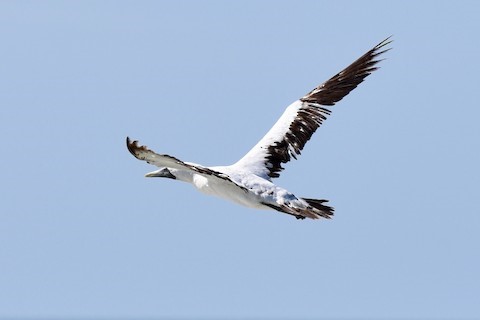
Masked Booby, S. d. dactylatra, subadult. (Passage Key National Wildlife Refuge, Florida; October 30, 2016.) © Ashley Scarpa

Masked Booby, S. d. dactylatra, subadult, showing the dark line on the underwing typical of immatures and subadults. (Offshore from Plaquemines Parish, Louisiana; November 18, 2017.) © Laurie Dugan
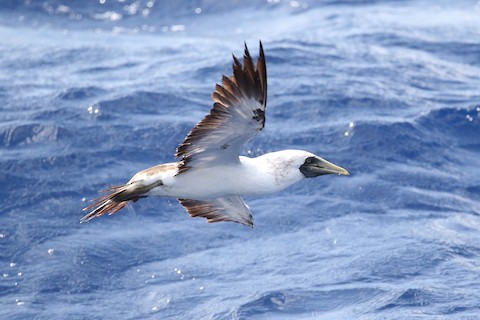
Masked Booby, S. d. dactylatra, subadult. (Offshore from Corpus Christi, Texas; October 15, 2017.) © Bob Friedrichs
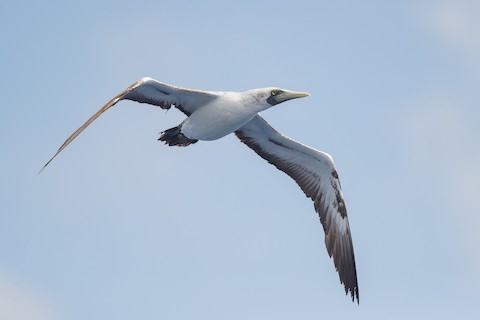
Masked Booby, S. d. dactylatra, subadult. (Offshore from Cape Hatteras, North Carolina; June 1, 2019.) © Ryan Sanderson
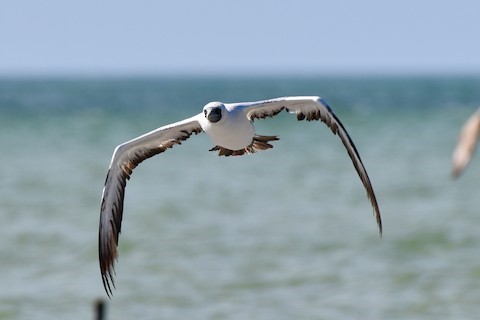
Masked Booby, S. d. dactylatra, subadult. (Passage Key National Wildlife Refuge, Florida; October 30, 2016.) © Ashley Scarpa

Masked Booby, S. d. dactylatra, subadult. (Offshore west of Guadeloupe; April 14, 2018.) © Nathan Langwald
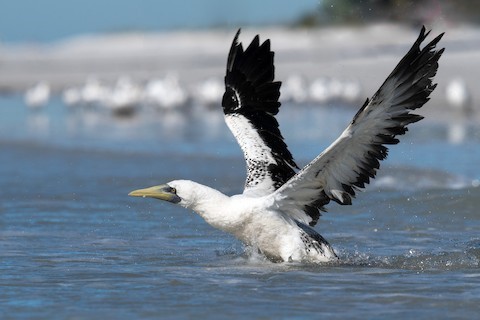
Masked Booby, S. d. dactylatra, subadult. (Suncoast Seabird Sanctuary, Redington Shores, Florida; December 15, 2019.) © Melissa James

Masked Booby, S. d. personata, subadult. (Marina del Rey, California; February 8, 2020.) © Robert McNab

Masked Booby, S. d. personata, subadult. (Offshore from Cameron County, Texas; August 8, 2015.) © Arman Moreno

Masked Booby, S. d. dactylatra, subadult. (Cabo Frio, Rio de Janeiro, Brazil; April 4, 2012.) © Mario Spinelli
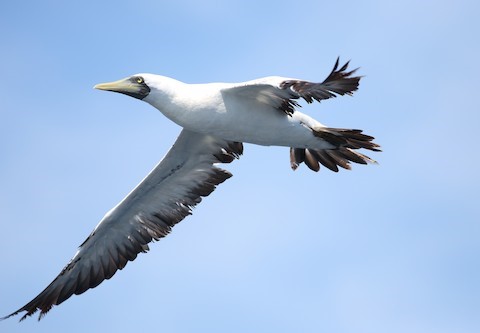
Masked Booby, subadult showing only a few remnant traces of dark feathers on the underwing lining. (Georges Bank, Massachusetts; August 20, 2019.) © Kate Sutherland
Cf. Nazca Booby. Masked and Nazca Boobies occur together throughout the tropical Pacific, and are easily confused at all ages, especially individuals in their first or second year. Under good viewing conditions, adult Nazca can be distinguished by its rosy or orange bill and sometimes by more extensive white on its tail—mainly the central feathers on the upperside.
Juvenile Nazca sometimes differs from juvenile Masked in having a paler and larger brownish hood that extends well down onto the breast—but this varies and many juvenile Nazcas have the smaller, darker brown hoods typical of juvenile Masked.
The typical plumage progressions of immature and subadult Nazca’s differ from Masked’s. Most immature Nazcas do not develop a distinct white collar; instead, the throat turns white first, leaving a dark cape (variable, but typically a shadow that is darkest on the crown and nape). However, a sizeable minority of immature Masked Boobies show a similar progression, so these general tendencies are not highly reliable for identification.
Cf. Gannets. Adults of the three gannet species are similar overall to Masked Booby, but are readily distinguished by the strong yellow-orange tint on their heads and much smaller area of dark facial skin.
Young gannets rarely resemble young Masked Boobies because of differences in the sequence of plumage changes from dark to white. In the rare cases where molting gannets appear similar, Masked is most reliably identified by its underwings, which are largely white except the tips and trailing edge.
Cf. Red-footed Booby. White morph Red-footed Boobies can appear similar to Masked at a distance but in most regions have all-white tails. In the eastern Pacific, however, the typical white morph Red-footed Booby has a dark tail—but the dark area is more extensive and not as black as Masked’s. Masked’s extensive blackish-blue mask is diagnostic, although Red-footed Boobies also show a narrowly dark mask.
The wing patterns differ more definitively: white morph Red-footed has more extensive white on the upperwing, and on the underwing it has an isolated black “comma” on the primary linings just beyond the wrist.
Cf. Blue-footed Booby. Young Masked Boobies resemble young Blue-footed Boobies at multiple stages—mainly as juveniles and subadults, less so during the intervening stages. Juvenile Blue-footed has a more extensive brown hood (often like adult Brown Booby, but paler). Subadult Blue-footed often appears to have a mask (dark feathers, not skin) but can be distinguished from subadult Masked by its all-dark upperwing (i.e., lacking the white leading edge that subadult Masked develops). The underwing pattern of Blue-footed is similar to that of juvenile and immature Masked, but the white areas on Blue-footed’s underwings are narrower and shorter, extending only slightly past the wrist.
Cf. Brown Booby. Juvenile Masked has approximately the same color pattern as an adult Brown Booby—i.e., brown upperparts and a brown hood—but its hood is much less extensive (ending above the breast), less sharply defined, and usually has a white notch in the center. Underwing patterns also differ.
Cf. Peruvian Booby. Like the adult Masked, Peruvian Booby has dark mask that contrasts with its white head and neck. Peruvian is distinguishable at all stages by its all-dark upperwings and back, and its complex underwing pattern.
Notes
Polytypic species consisting of four recognized subspecies: dactylatra, melanops, personata, and tasmani. Formerly considered conspecific with Nazca Booby (granti), but the two share breeding sites with little or no interbreeding.
The subspecies tasmani was originally described as a separate species: the “Tasman Booby”. It is not known to be distinguishable from other subspecies of Masked Booby except by the color of its irises, which are dark brown instead of yellow. The name “Tasman Booby” originally referred to a form that was believed to be extinct when it was described as a species (S. tasmani), but upon reevaluation that form was found to be synonymous with a recognized extant form of Masked Booby, S. d. fullagari, so the two were merged under the older name, tasmani. Through genetic analysis, researchers determined that tasmani was too recently diverged from other S. dactylatra to be considered a separate species.
References
Alderfer, J., and J.L. Dunn. 2014. National Geographic Complete Birds of North America (Second Edition). National Geographic Society, Washington, D.C.
Ascanio, D., G.A. Rodriguez, and R. Restall. 2017. Birds of Venezuela. Christopher Helm, London.
BirdLife International. 2018. Sula dactylatra. The IUCN Red List of Threatened Species 2018: e.T22736173A132666363. https://dx.doi.org/10.2305/IUCN.UK.2018-2.RLTS.T22736173A132666363.en. (Accessed March 5, 2021.)
Brazil, M. 2009. Birds of East Asia. Princeton University Press.
Department of the Environment. 2018. Sula dactylatra tasmani – Masked Booby (Tasman Sea). In Species Profile and Threats Database (Department of the Environment, Canberra). http://www.environment.gov.au/cgi-bin/sprat/public/publicspecies.pl?taxon_id=88109. (Accessed May 12, 2018.)
eBird. 2021. eBird: An online database of bird distribution and abundance. Cornell Lab of Ornithology, Ithaca, N.Y. http://www.ebird.org. (Accessed March 5, 2021.)
Harrison, P. 1983. Seabirds: An Identification Guide. Houghton Mifflin, Boston.
Howell, S.N.G., and S. Webb. 1995. A Guide to the Birds of Mexico and Northern Central America. Oxford University Press.
Howell, S.N.G., and K. Zufelt. 2019. Oceanic Birds of the World. Princeton University Press.
Ismar, S.M.H. 2013. Masked booby. In New Zealand Birds Online (Miskelly, C.M., ed.). www.nzbirdsonline.org.nz. (Accessed March 3, 2021.)
Ismar, S.M.H., K. Baird, S. Patel, C.D. Millar, and M.E. Hauber. 2010. Morphology of the recently reclassified Tasman Booby Sula dactylatra tasmani breeding on the Kermadec Islands. Marine Ornithology 38:105-109.
Kirwan, G.M., A. Levesque, M. Oberle, and C.J. Sharpe. 2019. Birds of the West Indies. Lynx Edicions, Barcelona.
Lee, D.S., and W.A. Mackin. 2009. Masked Booby. West Indian Breeding Seabird Atlas, http://www.wicbirds.net/mabo.html. (Accessed March 5, 2021.)
Nelson, J.B. 2005. Pelicans, Cormorants and Their Relatives. Oxford University Press.
Pitman, R.L., and J.R. Jehl. 1998. Geographic variation and reassessment of species limits in the “Masked” Boobies of the eastern Pacific Ocean. Wilson Bulletin 110:155-170.
Pratt, H.D., P.L. Bruner, and D.G. Berrett. 1987. A Field Guide to the Birds of Hawaii and the Tropical Pacific. Princeton University Press.
Priddel, D., Hutton, I., Olson, S., and R. Wheeler. 2005. Breeding biology of Masked Boobies (Sula dactylatra tasmani) on Lord Howe Island, Australia. Emu 105:105-113.
Pyle, R.L., and P. Pyle. 2017. The Birds of the Hawaiian Islands: Occurrence, History, Distribution, and Status. Version 2 (January 1, 2017). http://hbs.bishopmuseum.org/birds/rlp-monograph/. B.P. Bishop Museum, Honolulu, Hawaii.
Raffaele, H., J. Wiley, O. Garrido, A. Keith, and J. Raffaele. 1998. A Guide to the Birds of the West Indies. Princeton University Press, Princeton, N.J.
Raine, H., and A.F. Raine. 2020. ABA Field Guide to the Birds of Hawai’i. Scott & Nix, Inc., New York.
Sibley, D.A. 2000. The Sibley Guide to Birds. Alfred A. Knopf. New York.
van Perlo, B. 2002. Birds of Western and Central Africa. Princeton University Press.
van Perlo, B. 2009. A Field Guide to the Birds of Brazil. Oxford University Press.
Wells, J.V., and A.C. Wells. 2017. Birds of Aruba, Bonaire, and Curaçao. Cornell University Press.
Wikiaves. 2021. Atobá-grande, https://www.wikiaves.com.br/wiki/atoba-grande. (Accessed March 5, 2021.)
Xeno-Canto. 2021. Masked Booby – Sula dactylatra. https://www.xeno-canto.org/species/Sula-dactylatra. (Accessed February 26, 2021.)

